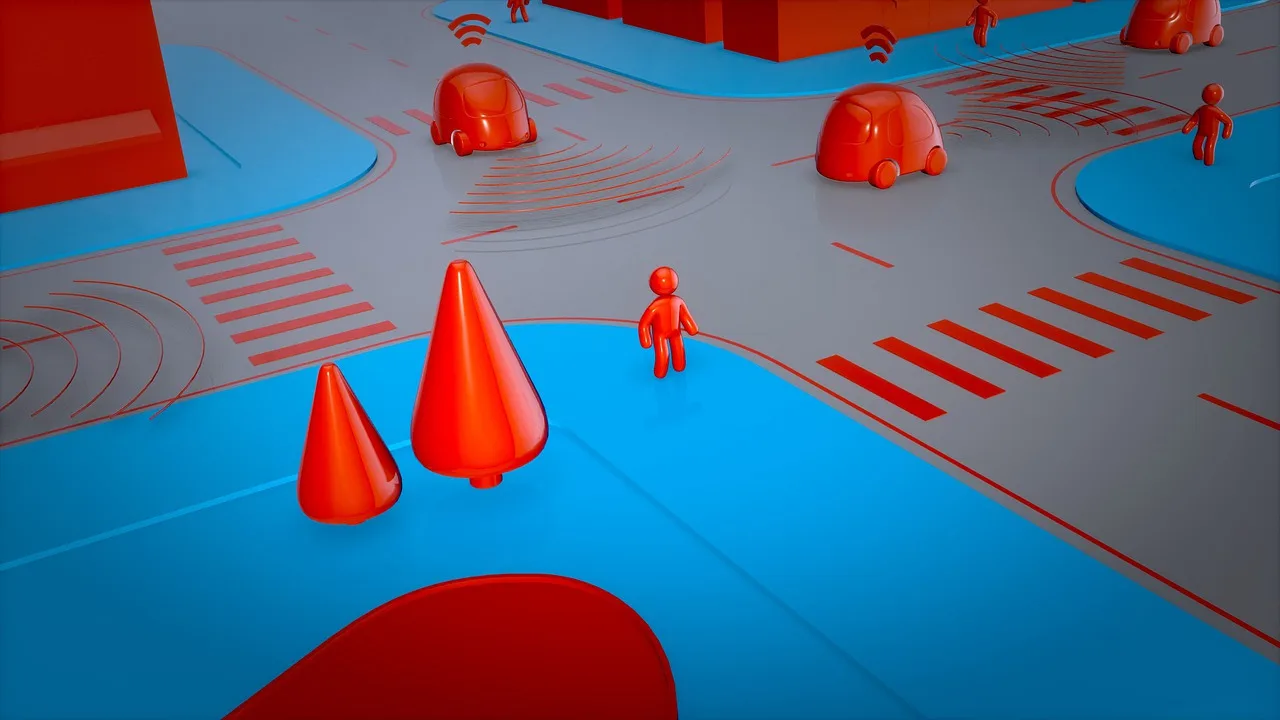These AI-powered automobiles hold out the opportunity of a comprehensive revolution in transportation, exceptional their human counterparts in the long run. The modification from human-driven to AI-driven vehicles is an intangible move as well as a technology development that provides previously undiscovered levels of approachability, effectiveness, and protection. In this article, we examine the strong influences for why self-driving or AI vehicles are set to transform transportation in the future.
Reasons why AI Cars will take over human cars:
Prioritizing Safety:
The prospect of significantly upsurging road safety is one of the main influences driving the approval of AI-driven automobiles. Progressive distinguishing technology, machine learning procedures, and instantaneous decision-making assistance can aid in decreasing human error, which accounts for most coincidences. AI vehicles are harmless by nature and cause rarer mishaps on our roads since they are not vulnerable to exhaustion, deviations, or poor judgment.
Enhanced Effectiveness of Traffic:
A deliberate and effective traffic stream is made promising by AI-driven automobiles that intermingle with intelligent organizations and with one another with comfort. These cars are accomplished by route optimization, traffic decrease, and trip interval reduction through the use of adaptive algorithms and actual data exchange. There is an obvious decrease in all traffic-related complications as well as an upgrade in driving coziness.
Benefits to the economy:
Economic achievements are predicted to be noteworthy when AI-powered vehicles become extensively used. Healthcare expenses and insurance percentages decline when accident rates drop. Also, fuel reserves and a reduction in environmental influence may arise from better-quality traffic flow effectiveness. An overabundance of new occupations, from AI developers to maintenance staff, are also probable to be created by the autonomous car division.
Impact on the Environment:
AI automobiles may assist in creating a more supportable and greener future. Carbon emissions can be diminished by optimizing driving practices, using energy-efficient navigation, and encouraging the use of electric and hybrid AI vehicles. The eco-friendly assistance of extensive implementation of AI cars becomes more considerable as automobile production moves toward cleaner machinery.
- Nearly 30% of UK Drivers Believe Car Tax Should Be Based on Mileage — Survey
- Why Planes and Boats Escaped the Luxury Tax But Cars Didn’t
- Australia’s Headlight Confusion: Authorities Warn Drivers After Viral $250 Headlight Rule Goes Wild Online
- 2025 Hyundai Venue Facelift Launched in India – Full Details, Variants, and Price
- Royal Enfield Bullet 650 Unveiled at EICMA 2025: A Classic Legend Returns
Superior Availability:
Improved convenience for people impotent to drive because of oldness, disability, or other reasons is one of the prospective assistances of autonomous vehicles. For residents where people previously trusted others for conveyance, self-driving cars can provide an innovative gradation of self-determination and individuality.
Developments in Technology:
Autonomous cars have touched previously obscure levels of intelligence appreciation to the rapid development of AI technologies like computer ideas and machine learning. As this expertise progresses, AI vehicles will be gradually more practiced at supervising perplexing situations, modifying to unpredictable traffic patterns, and assuring a comfortable and safe ride.
Modifying the Mobility Culture:
People’s perspectives and uses of mobility are changing in response to the emergence of ride-sharing services and the idea of Mobility-as-a-Service (MaaS). AI-driven vehicles, which provide economical, effective, and on-demand transportation options that adapt to consumers’ changing requirements and tastes, are well-positioned to play a significant part in this rapidly changing mobility culture.
Obstacles on the Path to Self-Sufficiency:
The road to AI cars being the standard is not without its difficulties, though:
Technological obstacles: Artificial Intelligence (AI) systems are still in the early stages of research and may encounter difficulties in complex situations such as inclement weather or unforeseen blocks. Before being widely used, robustness and dependability must be greatly increased.
Regulatory obstacles: To guarantee the safe operation of self-driving cars, extensive laws are required, and governments are still debating the moral and legal ramifications of these vehicles.
Public acceptance: Before the public’s trust in AI cars can be fully fulfilled, concerns around employment displacement and privacy must be addressed, as many people have doubts about the technology’s dependability and safety.
Final Thoughts:
It is not an issue of whether, but when, human-driven automobiles will give way to AI-driven ones. The transition to AI automobiles is a natural and unavoidable development given the indisputable advantages in terms of safety, effectiveness, financial benefits, environmental impact, and ease of use.
Artificial intelligence (AI) vehicles will predominate our roadways and guide us in a new age in the history of transportation as technology advances, legal frameworks are improved, and public acceptance rises. Even though there are still complications, the benefits could not be unnoticed. We can make certain that both people and AI cars flourish in the transportation of the future, proceeding us toward a better future, by accepting the inevitable and collaborating to solve the hurdles.
